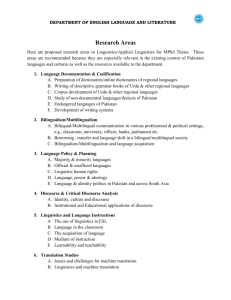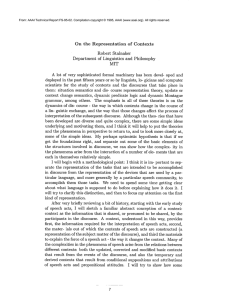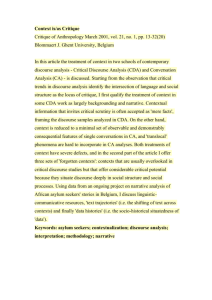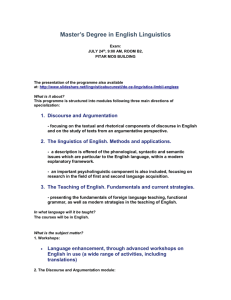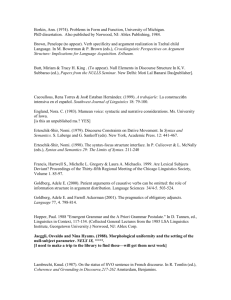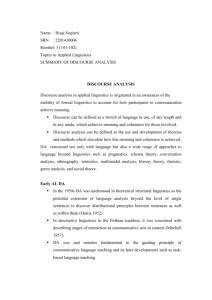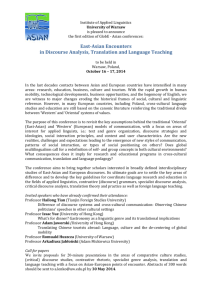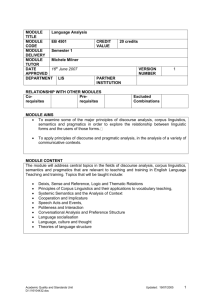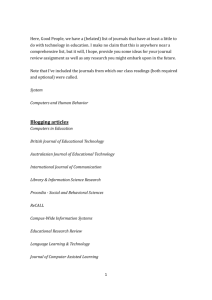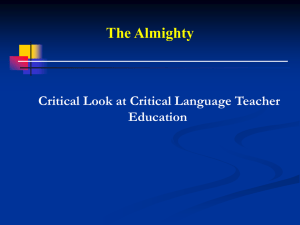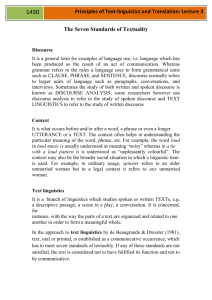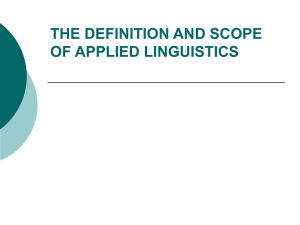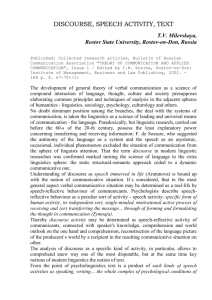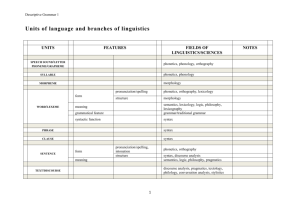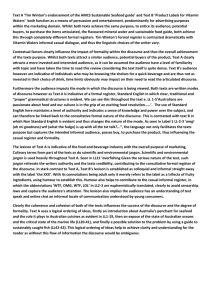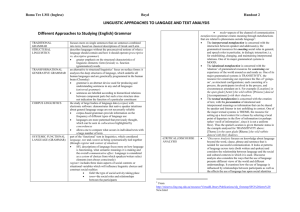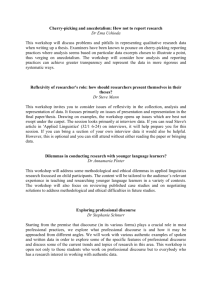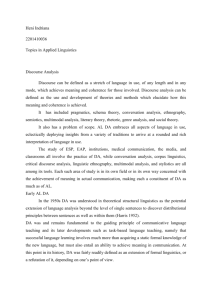Overview of Discourse Analysis - Emmy Nadia : A Teacher E
advertisement
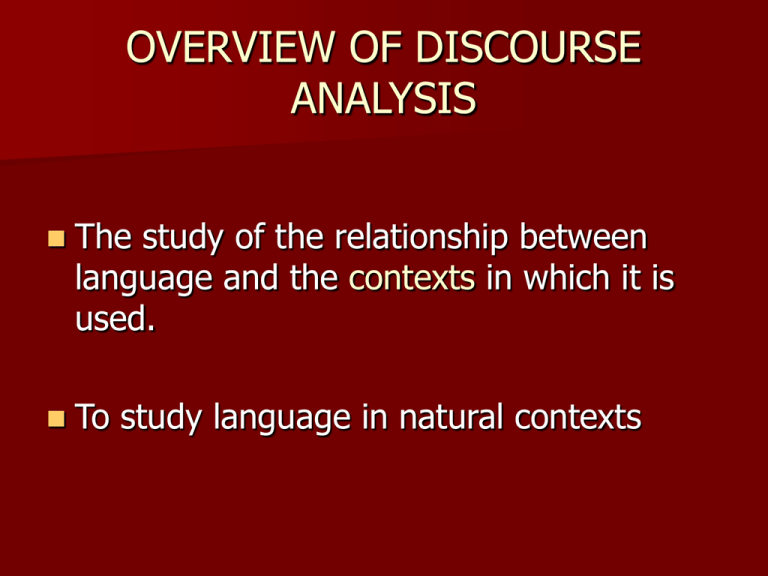
OVERVIEW OF DISCOURSE ANALYSIS The study of the relationship between language and the contexts in which it is used. To study language in natural contexts DISCIPLINES LINGUISTICS - Linguistics is the scientific study of language, which can be theoretical or applied. It includes study of language structure (grammar) and meaning (semantics). The study of grammar encompasses morphology (formation and alteration) of words and syntax (the rules that determine the way words combine into phrases and sentences). Also a part of this field are phonology, the study of sound systems and abstract sound units, and phonetics, which is concerned with the actual properties of speech sounds (phones), non-speech sounds, and how they are produced and perceived. Applied linguistics puts linguistic theories into practice in areas such as foreign language teaching, speech therapy, translation and speech pathology. SEMIOTICS-Study of sign processes (semiosis). It includes the study of how meaning is constructed and understood. This includes: Semantics: Relation between signs and the things they refer to, their denotata. Syntactics: Relation of signs to each other in formal structures. Pragmatics: Relation of signs to their impacts on those who use them PSYCHOLOGY ANTHROPOLOGY SOCIOLOGY STUDY LANGUAGE IN USE Variety of written texts Spoken data - classroom talks - Social activity - Institutionalised talks BRITISH DA Influenced by M.A.K. Halliday & Sinclair and Coulthard Language emphasizes social functions or themes Focus on teacher-pupil talk -patient interaction -service encounters -interviews -debates -business negotiations -monologues American DA Initiated by Gumperz & Hymes Conversation analysis Close observation of the behaviour of participants in talks and the emerging patterns Terms like turn taking, politeness, facepreserving phenomena, DISCOURSE ANALYSIS Has grown into a wide range and heterogeneous disciplines which find its unity in the description of language above the sentence and an interest in contexts and cultural influences which affect language in use Relevant in applied linguistics, SLL, SLT & Teaching in general. PURPOSE OF DA To converse meaningfully in various contexts To function in a society To participate in a conversation To organize/structure speech texts COMPONENTS OF DISCOURSE Grammar-connections & links Lexis-connections & links Intonation-affect interpretations Contexts-natural (ungrammatical+pauses+fillers) -artificial (constructed-scripts of drama) Forms & functions (how we interpret grammatical forms depends on linguistics & situationseg: Students: Madam, tell us about the exam. Teacher: Have I got an exam for you! (Ex-page 9 (McCarthy, 1990) Speech Acts( Austin & Searle) Discourse Analysis is fundamentally concerned with the relationship between L & the contexts of its use Seen as performing a certain act eg: a request, an instruction, an exemplifications. Turn taking Framing moves (verbal signals to show opening & closing-eg. Right then, ok, etc) Transaction (a sequence of exchange) Initiation response follow-up (question) (answer) (comment) WRITTEN DISCOURSE Cohesion- links between clauses & sentences in a text Coherence-something created by the reader in the act of reading the text (eg. Nik enjoys watching ‘dikir barat’. He was born in Kelantan) Interpretation-depends on readers schemata to make inferences Larger patterns in texts Some Approaches System and ritual constraints Scripts Speech Acts and speech events analysis Rhetorical analysis Rhetorical structure analysis Cohesion analysis Mode and syntax Contextual analysis In-class Discussion In your understanding, what is communicative competence? How does discourse analysis be applicable to promote communicative competence? In what ways might discourse analysis be beneficial to language teaching?



